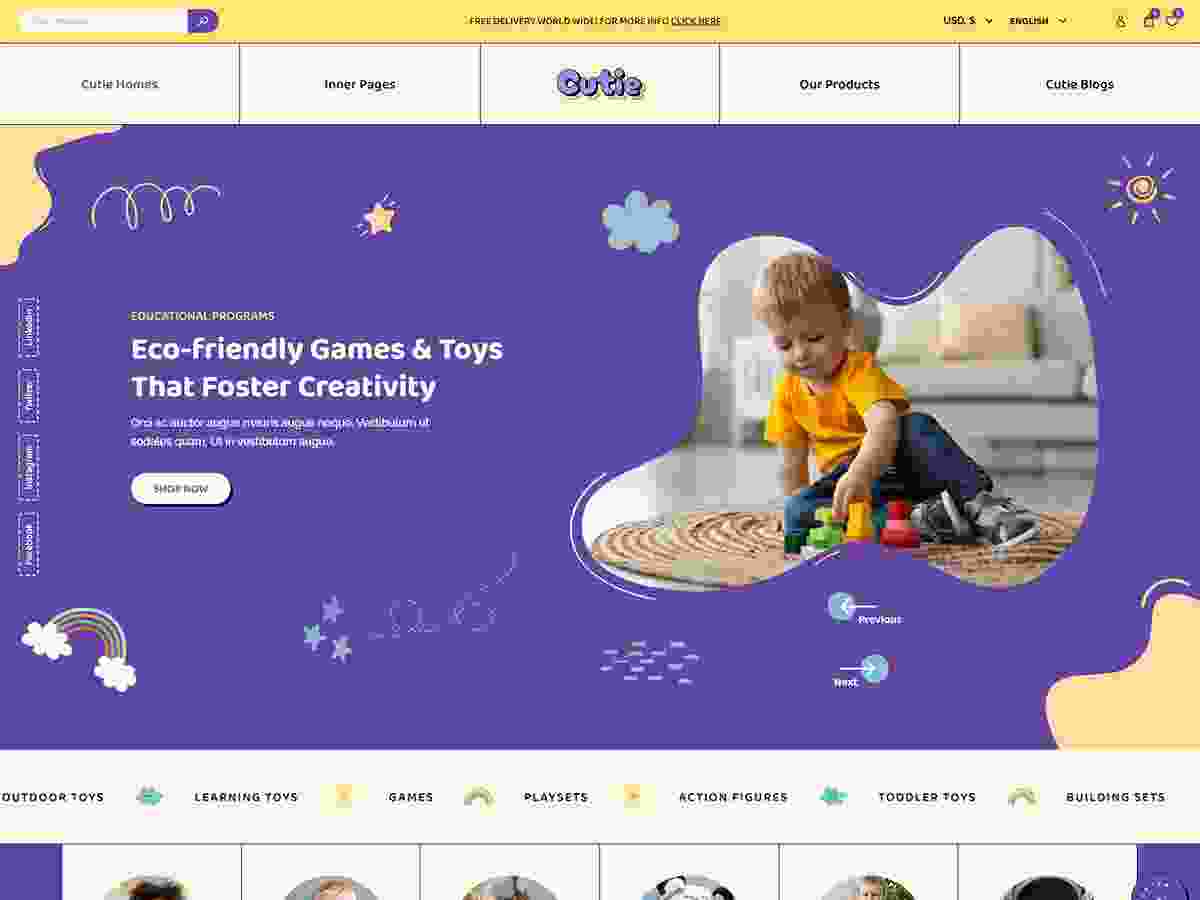The Thai Spa offers a holistic approach to well-being, blending ancient traditions with modern relaxation techniques, and at spa-wear.com, we understand the importance of enhancing this experience with comfortable and stylish spa wear. From traditional Thai massage to rejuvenating aromatherapy, a visit to the Thai spa is not just a treat but a pathway to physical and mental rejuvenation. Discover how this unique spa experience can enhance your life, and explore our collection of spa apparel, loungewear, and accessories to make your at-home spa days even more special.
1. What is the Essence of the Thai Spa?
The essence of the Thai spa lies in its holistic approach to wellness, integrating traditional Thai healing practices with modern spa therapies. This comprehensive approach emphasizes harmony between mind, body, and spirit.
Thai spas distinguish themselves through several key elements:
- Traditional Thai Massage: A cornerstone of the Thai spa experience, this massage involves assisted stretching and deep pressure to release tension and improve flexibility.
- Herbal Treatments: Many Thai spas utilize traditional herbal remedies, such as compresses and steams, to promote relaxation and healing.
- Aromatherapy: Essential oils derived from local plants and herbs are often incorporated to enhance the sensory experience and promote emotional well-being.
- Mindfulness Practices: Some Thai spas offer meditation and mindfulness sessions to help guests achieve a deeper state of relaxation and inner peace.
- Holistic Philosophy: The underlying philosophy emphasizes balance and harmony in all aspects of life, encouraging guests to cultivate a sense of overall well-being.
1.1 How Can I Recreate the Thai Spa Ambiance at Home?
You can recreate the Thai spa ambiance at home by focusing on sensory details and mindful practices. Start by decluttering your space to create a serene environment. Incorporate natural elements such as plants, stones, and wood to bring a sense of nature indoors. Use soft, warm lighting to create a relaxing atmosphere. Light scented candles or use an essential oil diffuser with calming scents like lavender, lemongrass, or eucalyptus. Play soothing Thai-inspired music to further enhance the ambiance.
Prepare a comfortable space for relaxation with soft cushions, blankets, and spa-wear from spa-wear.com. Consider purchasing a Thai herbal compress to use at home for muscle relaxation. Practice deep breathing exercises or guided meditation to calm your mind. Make herbal tea with ingredients like ginger, lemongrass, and pandan leaves. By paying attention to these details, you can create a tranquil and rejuvenating Thai spa experience in the comfort of your own home.
2. What are the Key Elements of a Traditional Thai Massage?
Traditional Thai massage, also known as nuad thai, is a unique form of therapeutic bodywork with roots in ancient healing practices. It is characterized by a combination of assisted stretching, acupressure, and rhythmic compression, designed to promote flexibility, relieve muscle tension, and balance the body’s energy flow.
Here are the key elements that define traditional Thai massage:
- Assisted Stretching: The therapist guides the recipient through a series of yoga-like postures, gently stretching muscles and increasing range of motion.
- Acupressure: Applying focused pressure to specific points on the body to stimulate energy flow and relieve blockages.
- Rhythmic Compression: Using palms, thumbs, elbows, knees, and feet to apply rhythmic pressure along energy lines to release tension.
- Energy Lines: Working along the sen, or energy lines, to balance and harmonize the body’s vital energy.
- No Oils: Typically performed without oils, allowing the therapist to have a firm grip and precise control during the massage.
- Floor Mat: Usually conducted on a floor mat, allowing the therapist to use their body weight and leverage effectively.
- Clothing: The recipient remains fully clothed in comfortable, loose-fitting attire to allow for ease of movement.
2.1 How Does Thai Massage Differ From Western Massage Techniques?
Thai massage differs significantly from Western massage techniques in its approach, philosophy, and methods. While Western massage typically focuses on relaxing muscles through kneading and stroking, Thai massage incorporates assisted stretching, acupressure, and energy work to promote overall well-being.
Here is a comparison of Thai massage and Western massage techniques:
| Feature | Thai Massage | Western Massage |
|---|---|---|
| Approach | Holistic, focusing on balancing energy and promoting flexibility. | Primarily focused on muscle relaxation and pain relief. |
| Techniques | Assisted stretching, acupressure, rhythmic compression along energy lines. | Kneading, stroking, effleurage, petrissage on specific muscles. |
| Clothing | Recipient remains fully clothed in loose-fitting attire. | Recipient typically disrobes and is draped with a sheet. |
| Oils/Lotions | Generally no oils or lotions are used. | Oils or lotions are commonly used to reduce friction. |
| Location | Typically performed on a floor mat. | Usually performed on a massage table. |
| Philosophy | Based on the concept of energy lines (sen) and balancing the body’s vital energy. | Based on anatomical and physiological principles, targeting specific muscles and tissues. |
| Typical Benefits | Increased flexibility, improved circulation, stress reduction, energy balance, pain relief. | Muscle relaxation, pain relief, reduced stress, improved circulation. |
| Therapist’s Role | Active participant, using their body weight and leverage to assist in stretching and applying pressure. | Passive participant, primarily using their hands to manipulate muscles. |
| Environment | Often incorporates elements of mindfulness and meditation. | Focuses on creating a relaxing and comfortable setting. |
| Overall Goal | To harmonize the body’s energy, promote flexibility, and improve overall well-being. | To relax muscles, reduce pain, and improve circulation. |
3. What Are the Benefits of Herbal Treatments in Thai Spas?
Herbal treatments are an integral part of the Thai spa experience, offering a range of therapeutic benefits derived from the healing properties of native plants and herbs. These treatments have been used for centuries in traditional Thai medicine to promote physical and mental well-being.
Here are some of the key benefits of herbal treatments in Thai spas:
- Muscle Relaxation: Herbal compresses, filled with a blend of medicinal herbs, are steamed and applied to the body to soothe sore muscles and relieve tension.
- Skin Rejuvenation: Herbal scrubs and masks help exfoliate dead skin cells, improve circulation, and promote a healthy, radiant complexion.
- Detoxification: Herbal steams and baths help to eliminate toxins from the body through perspiration, promoting overall detoxification.
- Stress Reduction: The aromatic properties of herbs like lemongrass, ginger, and eucalyptus have a calming effect on the mind, reducing stress and anxiety.
- Improved Circulation: Certain herbs, such as ginger and turmeric, have anti-inflammatory properties and can help improve blood circulation, reducing pain and swelling.
- Respiratory Relief: Inhaling herbal steam can help to clear nasal passages and ease respiratory congestion, providing relief from colds, allergies, and sinus problems.
- Enhanced Well-being: The combination of physical and aromatic benefits promotes a sense of relaxation, rejuvenation, and overall well-being.
3.1 What are Some Popular Herbs Used in Thai Spa Treatments?
Several herbs are commonly used in Thai spa treatments for their therapeutic properties. These herbs can be incorporated into compresses, scrubs, teas, and aromatherapy blends to provide a holistic spa experience.
Here are some popular herbs used in Thai spa treatments and their benefits:
| Herb | Benefits |
|---|---|
| Lemongrass | Calming and uplifting aroma, relieves stress and anxiety, detoxifies the body, relieves muscle pain. |
| Ginger | Anti-inflammatory, improves circulation, relieves muscle soreness, boosts the immune system, eases digestive discomfort. |
| Turmeric | Anti-inflammatory, antioxidant, promotes skin health, relieves joint pain, supports liver detoxification. |
| Eucalyptus | Clears nasal passages, eases respiratory congestion, antiseptic, reduces inflammation, relieves muscle pain. |
| Kaffir Lime | Uplifting aroma, promotes relaxation, improves circulation, detoxifies the body, relieves stress and anxiety. |
| Pandan Leaves | Calming and relaxing aroma, relieves stress and anxiety, lowers blood pressure, promotes restful sleep, improves skin health. |
| Plai | Anti-inflammatory, analgesic, relieves muscle pain and stiffness, promotes healing, reduces swelling. |
| Camphor | Analgesic, anti-inflammatory, decongestant, improves circulation, relieves muscle pain and stiffness. |
| Menthol | Cooling and refreshing, relieves muscle pain, reduces inflammation, clears nasal passages, eases respiratory congestion. |
| Tamarind | Exfoliates dead skin cells, brightens complexion, improves skin texture, anti-inflammatory, antioxidant. |
4. How Does Aromatherapy Enhance the Thai Spa Experience?
Aromatherapy plays a crucial role in enhancing the Thai spa experience by utilizing the therapeutic properties of essential oils to promote physical, emotional, and mental well-being. The use of essential oils in Thai spas is rooted in traditional practices and is carefully integrated into various treatments to amplify their benefits.
Here’s how aromatherapy enhances the Thai spa experience:
- Stress Reduction: Certain essential oils, such as lavender, chamomile, and bergamot, have calming properties that help reduce stress, anxiety, and tension.
- Mood Enhancement: Essential oils like sweet orange, grapefruit, and ylang-ylang can uplift the mood, promote feelings of happiness, and reduce symptoms of depression.
- Muscle Relaxation: Oils like eucalyptus, peppermint, and rosemary have analgesic and anti-inflammatory properties that can help relieve muscle pain, stiffness, and soreness.
- Improved Sleep: Inhaling certain essential oils, such as lavender, sandalwood, and cedarwood, can promote relaxation and improve sleep quality.
- Respiratory Relief: Oils like eucalyptus, tea tree, and peppermint can help clear nasal passages, ease respiratory congestion, and relieve symptoms of colds and allergies.
- Skin Rejuvenation: Essential oils like rose, frankincense, and sandalwood have antioxidant and anti-aging properties that can help improve skin health, reduce wrinkles, and promote a radiant complexion.
- Enhanced Sensory Experience: The aromatic properties of essential oils can create a more immersive and enjoyable spa experience, heightening relaxation and promoting a sense of well-being.
4.1 What are the Most Popular Essential Oils Used in Thai Spas?
Thai spas commonly use a variety of essential oils, each selected for its unique therapeutic properties and ability to enhance the overall spa experience. These oils are often used in massage blends, aromatherapy diffusers, and bath products.
Here are some of the most popular essential oils used in Thai spas and their benefits:
| Essential Oil | Benefits |
|---|---|
| Lavender | Calming and relaxing, reduces stress and anxiety, promotes sleep, relieves muscle tension, soothes skin irritations. |
| Lemongrass | Uplifting and energizing, relieves stress, detoxifies the body, eases muscle pain, insect repellent. |
| Eucalyptus | Clears nasal passages, eases respiratory congestion, reduces inflammation, relieves muscle pain, antiseptic. |
| Peppermint | Cooling and refreshing, relieves muscle pain, reduces inflammation, clears nasal passages, eases headaches, improves concentration. |
| Rosemary | Stimulating and invigorating, improves memory and concentration, relieves muscle pain, boosts the immune system, promotes hair growth. |
| Sandalwood | Grounding and balancing, reduces stress and anxiety, promotes relaxation, improves sleep, skin rejuvenation, aphrodisiac. |
| Jasmine | Uplifting and euphoric, reduces stress and anxiety, promotes relaxation, aphrodisiac, skin rejuvenation, improves mood. |
| Ylang-Ylang | Calming and uplifting, reduces stress and anxiety, promotes relaxation, aphrodisiac, lowers blood pressure, enhances mood. |
| Bergamot | Uplifting and energizing, reduces stress and anxiety, improves mood, balances emotions, relieves skin irritations, antiseptic. |
| Sweet Orange | Uplifting and energizing, reduces stress and anxiety, improves mood, boosts the immune system, detoxifies the body, skin rejuvenation. |
| Tea Tree | Antiseptic, antifungal, antiviral, reduces inflammation, clears skin infections, boosts the immune system, respiratory relief. |
| Geranium | Balancing and harmonizing, reduces stress and anxiety, improves mood, regulates hormones, skin rejuvenation, relieves skin irritations. |
5. What Role Does Mindfulness Play in the Thai Spa Experience?
Mindfulness is an essential component of the Thai spa experience, enhancing its therapeutic benefits and promoting overall well-being. By encouraging guests to be present in the moment and fully engage with their senses, Thai spas aim to cultivate a deeper sense of relaxation, inner peace, and self-awareness.
Here’s how mindfulness is integrated into the Thai spa experience:
- Meditation: Many Thai spas offer guided meditation sessions to help guests calm their minds, reduce stress, and cultivate inner peace.
- Breathing Exercises: Deep breathing exercises are often incorporated into treatments to promote relaxation, improve circulation, and enhance the flow of energy.
- Sensory Awareness: Guests are encouraged to pay attention to their senses during treatments, noticing the sights, sounds, smells, and sensations around them.
- Mindful Movement: Practices like yoga and tai chi may be offered to help guests connect with their bodies and cultivate a sense of presence and awareness.
- Quiet Reflection: Time is often set aside for guests to simply relax and reflect in a peaceful environment, allowing them to process their experiences and connect with their inner selves.
- Mindful Communication: Therapists are trained to communicate with guests in a calm and attentive manner, creating a safe and supportive space for self-exploration and healing.
- Holistic Approach: Mindfulness is integrated into all aspects of the spa experience, from the design of the space to the selection of treatments and products, creating a cohesive and transformative environment.
5.1 How Can I Incorporate Mindfulness into My Daily Routine?
Incorporating mindfulness into your daily routine can significantly improve your overall well-being by reducing stress, increasing self-awareness, and promoting a sense of presence and gratitude. Even small mindful practices can have a profound impact on your mental and emotional health.
Here are some simple ways to incorporate mindfulness into your daily routine:
- Start with a Mindful Morning: Begin your day with a few minutes of quiet meditation or deep breathing exercises. Focus on your breath and observe your thoughts without judgment.
- Practice Mindful Eating: Pay attention to the taste, texture, and aroma of your food. Eat slowly and savor each bite, avoiding distractions like your phone or computer.
- Engage in Mindful Movement: Take a walk in nature, focusing on the sensations of your body and the sights, sounds, and smells around you. Practice yoga or tai chi, paying attention to your breath and movements.
- Take Mindful Breaks: Throughout the day, take short breaks to disconnect from work and focus on your breath. Stretch your body, look out the window, or simply close your eyes and relax.
- Practice Mindful Listening: When engaging in conversations, give the speaker your full attention. Listen without interrupting or planning your response, and try to understand their perspective.
- Cultivate Gratitude: At the end of each day, take a few moments to reflect on the things you are grateful for. Write them down in a journal or simply think about them in your mind.
- Use Technology Mindfully: Set boundaries around your use of technology, such as turning off notifications or designating specific times for checking email and social media.
- Practice Self-Compassion: Treat yourself with kindness and understanding, especially during difficult times. Acknowledge your struggles and remember that everyone makes mistakes.
- Engage Your Senses: Throughout the day, take moments to fully engage your senses. Notice the warmth of the sun on your skin, the smell of flowers in the air, or the sound of birds singing.
6. What Kind of Spa Wear is Suitable for the Thai Spa?
Choosing the right spa wear is essential for enhancing comfort and relaxation during your Thai spa experience. The ideal spa wear should be lightweight, breathable, and non-restrictive, allowing you to fully enjoy your treatments and unwind in style. At spa-wear.com, we offer a wide range of spa apparel designed to meet these needs.
Here’s what kind of spa wear is suitable for the Thai spa:
- Loose-fitting clothing: Opt for clothing that allows for ease of movement and doesn’t constrict your body.
- Natural fabrics: Choose breathable natural fabrics like cotton, linen, or bamboo to keep you cool and comfortable.
- Wraps and robes: A soft, lightweight wrap or robe is perfect for lounging and transitioning between treatments.
- Comfortable footwear: Select comfortable slippers or sandals that are easy to slip on and off.
- Minimal accessories: Avoid wearing jewelry or accessories that could interfere with your treatments.
- Appropriate undergarments: Choose comfortable, seamless undergarments that won’t dig into your skin or cause discomfort.
- Spa-specific attire: Some spas may provide specific attire for certain treatments, such as Thai massage, where loose-fitting clothing is required.
6.1 What are the Benefits of Wearing Comfortable Spa Wear?
Wearing comfortable spa wear can significantly enhance your spa experience, promoting relaxation, reducing stress, and improving overall well-being. The right clothing can help you feel more at ease and allow you to fully enjoy your treatments without any distractions or discomfort.
Here are some of the benefits of wearing comfortable spa wear:
- Enhanced Relaxation: Comfortable clothing can help you feel more relaxed and at ease, allowing you to fully unwind and enjoy your spa treatments.
- Reduced Stress: Restrictive or uncomfortable clothing can increase stress and tension. Loose-fitting, breathable spa wear can help reduce these feelings, promoting a sense of calm and well-being.
- Improved Circulation: Tight clothing can restrict blood flow, leading to discomfort and even health problems. Comfortable spa wear allows for proper circulation, promoting overall health.
- Increased Comfort: Soft, natural fabrics feel gentle against your skin, providing a comfortable and soothing experience.
- Freedom of Movement: Loose-fitting clothing allows for ease of movement, which is especially important during treatments like Thai massage, where stretching and flexibility are involved.
- Temperature Regulation: Breathable fabrics help regulate your body temperature, keeping you cool in warm environments and warm in cool environments.
- Enhanced Spa Experience: Wearing comfortable spa wear can elevate your spa experience, making it more enjoyable and memorable.
7. How Can You Extend the Thai Spa Experience at Home?
Extending the Thai spa experience at home allows you to enjoy the therapeutic benefits of traditional practices and treatments on a regular basis. By creating a serene and mindful environment, incorporating herbal remedies, and practicing relaxation techniques, you can transform your home into a personal sanctuary.
Here are some ways to extend the Thai spa experience at home:
- Create a Spa-Like Atmosphere: Transform your bathroom or bedroom into a relaxing oasis with soft lighting, calming colors, and natural elements like plants, stones, and wood.
- Incorporate Aromatherapy: Use essential oil diffusers or scented candles with calming scents like lavender, lemongrass, or eucalyptus to create a soothing ambiance.
- Prepare Herbal Baths: Add herbal bath salts or essential oils to your bathwater for a therapeutic soak.
- Practice Self-Massage: Learn basic massage techniques and use massage oils or lotions to relax your muscles and relieve tension.
- Use Herbal Compresses: Purchase or make your own Thai herbal compresses and apply them to sore muscles for pain relief and relaxation.
- Make Herbal Teas: Brew herbal teas with ingredients like ginger, lemongrass, and pandan leaves for a calming and detoxifying beverage.
- Practice Mindfulness: Set aside time each day for meditation, deep breathing exercises, or mindful movement to cultivate inner peace and self-awareness.
- Wear Comfortable Spa Wear: Invest in comfortable spa wear from spa-wear.com to enhance your relaxation and create a spa-like atmosphere at home.
- Play Soothing Music: Listen to calming Thai-inspired music to further enhance the ambiance.
- Limit Distractions: Turn off your phone, computer, and other electronic devices to create a peaceful and distraction-free environment.
7.1 What Products are Essential for an At-Home Thai Spa Day?
To create an authentic at-home Thai spa day, it’s essential to have the right products and tools. These items will help you recreate the sensory experiences and therapeutic benefits of a traditional Thai spa in the comfort of your own home.
Here are some essential products for an at-home Thai spa day:
| Product | Benefits |
|---|---|
| Essential Oil Diffuser | Disperses calming essential oils into the air, creating a relaxing and aromatic atmosphere. |
| Essential Oils | Lavender, lemongrass, eucalyptus, peppermint, and sandalwood for stress relief, relaxation, and respiratory support. |
| Herbal Bath Salts | Epsom salts, Himalayan pink salt, and dried herbs for a detoxifying and muscle-soothing bath. |
| Massage Oils/Lotions | Natural oils like coconut, almond, or jojoba, infused with essential oils for a relaxing self-massage. |
| Thai Herbal Compress | Steamed herbal compress filled with medicinal herbs for muscle pain relief and relaxation. |
| Herbal Teas | Ginger, lemongrass, and pandan leaf teas for a calming and detoxifying beverage. |
| Spa Wear | Comfortable robes, wraps, slippers, and loungewear from spa-wear.com for enhanced relaxation and comfort. |
| Scented Candles | Natural wax candles with calming scents like lavender or jasmine for a soothing ambiance. |
| Meditation Cushion | Provides comfortable support for meditation and mindfulness practices. |
| Soothing Music | Thai-inspired music or nature sounds for a relaxing and immersive experience. |
| Exfoliating Scrub | Natural scrubs with ingredients like sugar, salt, or rice bran for gentle exfoliation and skin rejuvenation. |
| Face Mask | Clay, herbal, or hydrating face masks for cleansing, nourishing, and revitalizing the skin. |
| Eye Pillow | Filled with flax seeds and lavender for relaxation and stress relief. |
| Warm Towels | Soft, warm towels for cleansing and comforting the skin. |
| Humidifier | Adds moisture to the air, preventing dryness and promoting respiratory health. |
8. What Should I Expect During My First Visit to a Thai Spa?
Your first visit to a Thai spa can be an exciting and transformative experience, offering a unique approach to relaxation, healing, and well-being. Knowing what to expect can help you feel more comfortable and prepared, allowing you to fully embrace the experience.
Here’s what you can expect during your first visit to a Thai spa:
- Arrival and Check-in: You will be greeted by friendly staff and asked to fill out a brief health questionnaire.
- Consultation: A therapist will discuss your health history, lifestyle, and treatment goals to customize your spa experience.
- Attire: You will typically be provided with loose-fitting clothing to wear during your treatments.
- Ambiance: Expect a serene and calming atmosphere with soft lighting, soothing music, and natural elements.
- Traditional Thai Massage: If you opt for a Thai massage, you will lie on a floor mat while the therapist uses assisted stretching, acupressure, and rhythmic compression to release tension and improve flexibility.
- Herbal Treatments: If you choose herbal treatments, you may experience herbal compresses, scrubs, steams, or baths, each designed to promote relaxation and healing.
- Aromatherapy: Essential oils will be used to enhance your treatments, promoting physical, emotional, and mental well-being.
- Mindfulness: You may be encouraged to engage in mindfulness practices such as meditation or deep breathing exercises to enhance your relaxation.
- Post-Treatment: After your treatments, you will be given time to relax and rehydrate with herbal tea or water.
- Feedback: You will be asked to provide feedback on your experience to help the spa improve its services.
8.1 What are Some Etiquette Tips for Visiting a Thai Spa?
Following proper etiquette during your visit to a Thai spa can help ensure a respectful and enjoyable experience for yourself and others.
Here are some etiquette tips for visiting a Thai spa:
- Arrive on Time: Arrive a few minutes early to allow time for check-in and consultation.
- Communicate Your Needs: Communicate your health concerns, preferences, and comfort levels to your therapist.
- Respect the Silence: Maintain a quiet and respectful demeanor to preserve the peaceful atmosphere.
- Turn Off Your Phone: Turn off or silence your cell phone to avoid disturbing others.
- Respect the Therapist: Treat your therapist with respect and professionalism.
- Tip Appropriately: Tip your therapist for excellent service.
- Provide Feedback: Provide honest feedback on your experience to help the spa improve its services.
- Avoid Strong Scents: Refrain from wearing strong perfumes or colognes.
- Shower Beforehand: Shower before your appointment to ensure cleanliness.
- Be Mindful of Others: Be mindful of others and avoid loud conversations or disruptive behavior.
- Dress Appropriately: Wear comfortable, loose-fitting clothing.
- Follow Instructions: Follow the instructions of the spa staff and therapists.
9. Where Can I Find an Authentic Thai Spa Experience in the USA?
Finding an authentic Thai spa experience in the USA involves looking for spas that prioritize traditional Thai healing practices, employ trained therapists, and create a serene and culturally sensitive environment. While many spas offer Thai-inspired treatments, not all provide a truly authentic experience.
Here’s how to find an authentic Thai spa experience in the USA:
- Research Online: Look for spas that specialize in Thai massage and herbal treatments.
- Check Credentials: Ensure that the therapists are trained and certified in traditional Thai massage techniques.
- Read Reviews: Read online reviews and testimonials to get an idea of the spa’s quality and authenticity.
- Visit Thai Communities: Look for spas located in or near Thai communities, as they are more likely to offer authentic services.
- Ask for Recommendations: Ask friends, family, or online communities for recommendations.
- Look for Traditional Elements: Authentic Thai spas will incorporate traditional elements such as herbal compresses, aromatherapy, and mindfulness practices.
- Inquire About Products: Ask about the products used in the treatments, ensuring they are natural and authentic.
- Consider Location: Look for spas in areas known for wellness and spa culture, such as Scottsdale, Arizona.
9.1 What Makes a Thai Spa Authentic?
Several factors contribute to the authenticity of a Thai spa, ensuring that it provides a genuine and culturally sensitive experience.
Here’s what makes a Thai spa authentic:
- Trained Therapists: Therapists trained in traditional Thai massage techniques and herbal remedies.
- Traditional Techniques: Use of traditional Thai massage techniques, including assisted stretching, acupressure, and rhythmic compression.
- Herbal Treatments: Incorporation of traditional herbal treatments, such as compresses, steams, and baths.
- Aromatherapy: Use of essential oils derived from native Thai plants and herbs.
- Mindfulness Practices: Integration of mindfulness practices such as meditation and deep breathing exercises.
- Cultural Sensitivity: Respect for Thai culture and traditions.
- Serene Environment: A peaceful and calming atmosphere with soft lighting, soothing music, and natural elements.
- Natural Products: Use of natural and authentic products.
- Holistic Approach: Emphasis on the harmony between mind, body, and spirit.
- Community Connections: Connection to Thai communities and cultural organizations.
10. How Does the Thai Spa Promote Overall Well-Being?
The Thai spa promotes overall well-being by offering a holistic approach to health and healing, addressing the physical, emotional, and mental aspects of each individual. By integrating traditional practices with modern spa therapies, Thai spas aim to cultivate a sense of balance, harmony, and inner peace.
Here’s how the Thai spa promotes overall well-being:
- Physical Relaxation: Thai massage, herbal treatments, and aromatherapy can help relax muscles, relieve tension, and improve circulation.
- Stress Reduction: Mindfulness practices, meditation, and calming scents can help reduce stress, anxiety, and depression.
- Improved Sleep: Relaxing treatments and mindfulness practices can improve sleep quality and promote restful sleep.
- Pain Relief: Thai massage and herbal treatments can help relieve pain from muscle soreness, arthritis, and other conditions.
- Detoxification: Herbal steams and baths can help eliminate toxins from the body, promoting overall detoxification.
- Skin Rejuvenation: Herbal scrubs and masks can help exfoliate dead skin cells, improve circulation, and promote a healthy complexion.
- Emotional Balance: Essential oils and mindfulness practices can help balance emotions, reduce mood swings, and promote feelings of happiness.
- Mental Clarity: Meditation and deep breathing exercises can help improve focus, concentration, and mental clarity.
- Self-Awareness: Mindfulness practices can help increase self-awareness, allowing you to connect with your inner self and gain a deeper understanding of your thoughts and emotions.
- Holistic Approach: By addressing all aspects of your well-being, the Thai spa can help you achieve a greater sense of balance, harmony, and inner peace.
10.1 Why Should I Choose a Thai Spa Over Other Spa Experiences?
Choosing a Thai spa over other spa experiences offers a unique and holistic approach to well-being, blending ancient traditions with modern therapies to promote physical, emotional, and mental harmony. If you’re looking for an experience that goes beyond simple relaxation and delves into deeper healing and self-discovery, a Thai spa may be the perfect choice.
Here are some reasons to choose a Thai spa over other spa experiences:
- Holistic Approach: Thai spas offer a holistic approach to well-being, addressing all aspects of your health and healing.
- Traditional Practices: Thai spas incorporate traditional Thai practices such as massage, herbal treatments, and aromatherapy.
- Mindfulness Integration: Thai spas integrate mindfulness practices to promote relaxation, stress reduction, and self-awareness.
- Unique Techniques: Thai massage techniques are unique and effective for relieving muscle tension, improving flexibility, and balancing energy flow.
- Cultural Sensitivity: Thai spas respect and honor Thai culture and traditions.
- Comprehensive Benefits: Thai spas offer a wide range of benefits, including physical relaxation, stress reduction, pain relief, detoxification, and emotional balance.
- Long-Lasting Effects: The holistic approach of Thai spas can provide long-lasting effects on your overall well-being.
- Authentic Experience: Authentic Thai spas offer a genuine and culturally sensitive experience.
- Personal Transformation: Thai spas can provide a transformative experience, helping you connect with your inner self and achieve a greater sense of balance, harmony, and inner peace.
- Overall Value: The comprehensive benefits and transformative potential of Thai spas offer excellent value for your investment in your health and well-being.
For those seeking comfortable and stylish spa wear to enhance their at-home or professional Thai spa experience, visit spa-wear.com. Explore our collection of spa apparel, loungewear, and accessories, and embrace the holistic benefits of the Thai spa lifestyle.
FAQ: Your Questions About The Thai Spa Answered
What is the main focus of a Thai spa?
The main focus of a Thai spa is to provide a holistic approach to wellness by integrating traditional Thai healing practices with modern spa therapies, emphasizing the harmony between mind, body, and spirit.
What are the key elements of a Thai massage?
Key elements include assisted stretching, acupressure, rhythmic compression, work along energy lines (sen), typically no oils, usually performed on a floor mat, and the recipient remains fully clothed.
How does Thai massage differ from Western massage?
Thai massage is more holistic, focusing on balancing energy and promoting flexibility, while Western massage primarily focuses on muscle relaxation and pain relief through kneading and stroking.
What are some popular herbs used in Thai spa treatments?
Popular herbs include lemongrass, ginger, turmeric, eucalyptus, and kaffir lime, each offering unique therapeutic benefits such as muscle relaxation, anti-inflammation, and stress reduction.
How does aromatherapy enhance the Thai spa experience?
Aromatherapy enhances the experience by using essential oils to promote physical, emotional, and mental well-being, reducing stress, enhancing mood, relieving muscle pain, and improving sleep.
What role does mindfulness play in a Thai spa?
Mindfulness enhances the therapeutic benefits by encouraging guests to be present in the moment and fully engage with their senses, cultivating a deeper sense of relaxation, inner peace, and self-awareness.
What kind of spa wear is suitable for a Thai spa?
Suitable spa wear includes loose-fitting clothing, natural fabrics like cotton or linen, wraps and robes, and comfortable footwear to enhance relaxation and freedom of movement.
How can I extend the Thai spa experience at home?
Extend the experience by creating a spa-like atmosphere, incorporating aromatherapy, preparing herbal baths and teas, practicing self-massage, and wearing comfortable spa wear.
What should I expect during my first visit to a Thai spa?
Expect a consultation, loose-fitting clothing, a serene atmosphere, traditional Thai massage or herbal treatments, aromatherapy, and mindfulness practices.
Where can I find an authentic Thai spa experience in the USA?
Look for spas that specialize in Thai practices, employ trained therapists, are located near Thai communities, and incorporate traditional elements like herbal compresses and aromatherapy.
Address: 7014 E Camelback Rd, Scottsdale, AZ 85251, United States. Phone: +1 (480) 947-5400. Website: spa-wear.com.





